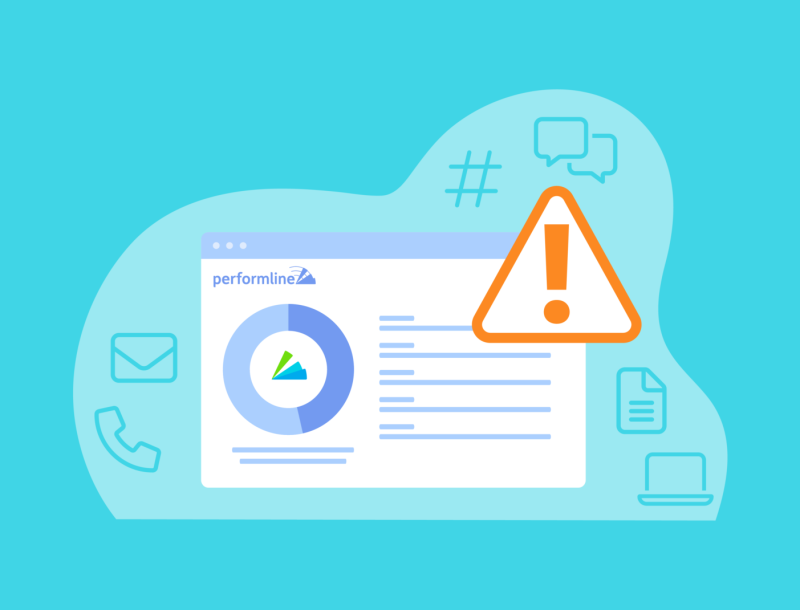Social Media Compliance Monitoring for Loan Officers

Now more than ever, it’s critical for mortgage lenders to have a social media presence in order to connect with prospective borrowers. For most people, social media is used daily to seek entertainment, connect with others, and form decisions about a company’s brand and make critical purchasing decisions.
Between this wide range of ages and increased information consumption online prior to purchasing, the percentage of purchasing power across these platforms has increased exponentially over the past few years. All of this requires loan officers to have a strong social media strategy, but with increased outreach comes a heightened number of possible compliance and brand issues.
Social media compliance monitoring of your loan officers doesn’t have to be a difficult and daunting task.
In order to help shape your organization’s social media compliance program to ensure regulatory compliance of your loan officers across multiple platforms you need to focus on four areas: documentation and process of mortgage-specific social media regulations, company brand and content guidelines, training and requirements for individual loan officers, and continuous monitoring.
Federal and State Mortgage Social Media Regulations
The first step of building out a social media compliance plan for your mortgage lenders is to have clear documentation of both federal and state mortgage-specific social media regulations.
These mortgage-specific regulations include, but are not limited to, an understanding of:
- The Truth in Lending Act (TILA): Requires loan officers to provide clear, standardized disclosures about loan terms and costs on social media advertising, ensuring consumers can make informed decisions
- Unfair, Deceptive, or Abusive Acts or Practices (UDAAP): Prohibits loan officers from using misleading, false, or deceptive messaging in social media marketing
- The Real Estate Settlement Procedures Act (RESPA): Restricts loan officers from engaging in certain referral and kickback practices on social media
- Equal Credit Opportunity Act (ECOA): Mandates that in their social media outreach, loan officers must offer equal lending opportunities without bias regarding an applicant’s demographics or financial support sources
- Fair Housing Act: Obligates loan officers to ensure their social media promotions are free from bias, promoting equal access to housing regardless of an individual’s background or family status. It also requires the use of the Equal Housing Opportunity logo or statement in advertising, including social media profiles and promotions.
Resources on these regulations can be sought through:
- Regulatory agency websites, including the Consumer Financial Protection Bureau (CFPB), the Federal Trade Commission (FTC), and Department of Housing and Urban Development
- Industry publications, such as Mortgage News Daily and National Mortgage news
- Professional associations and organizations, such as the Mortgage Bankers Association (MBA)
- Joining the COMPLY Mortgage Regulatory Compliance Community
- PerformLine’s blog and resource library
In addition to federal regulations, each state has their own state requirements that need to be met. All states have various requirements as it pertains to advising or requiring mortgage licensees to maintain copies of their social media advertisements.
Ensure all federal and your state regulations are known and well-documented for your loan officers.
Company Brand and Content Guidelines
The next step in your social media compliance process should be centered around your company’s brand and content guidelines. Your brand should have specific guidelines that dictate the content of marketing materials. These should be clearly documented and used in a loan officer’s social media marketing strategy.
In addition to adhering to the company’s general brand guidelines, there should be a content approval process put in place to ensure the post is compliant before sharing. This process can loop in your compliance department, legal team and anyone else who might need to review.
Training and Requirements for Mortgage Lenders
Each mortgage lender has their own set of specific regulations when it comes to marketing and what must be included. Make sure that your loan officers are aware of each of these and include them where necessary.
- NMLS Number: The NMLS number (both personal and company) is required for loan officers in order for consumers to check up on their lenders. Lending officers must have this number available and easy to find on their profiles.
- NMLS Consumer Access link: Consumers need to know where they can find information about their lenders, which is through the Consumer Access link. Require this to be included somewhere on your loan officer’s social profiles.
- Loan Officer’s Name on Personal Sites: Loan officers must disclose their name on their social media profiles as it is listed on the consumer access site, this validates their identity to consumers and provides complete transparency.
- Equal Housing Lender Statement: Institutions backed by the FDIC requires mortgage lenders to disclose themselves as an Equal Housing Lender or Equal Opportunity Lender. Be sure that loan officers have this somewhere on their profiles.
- Name of Parent Corporation: Loan officers should disclose their association with your company and point back to your company’s website.
Along with what is required in their postings, also include a list of what should not be included.
- Inaccurate or Outdated Mortgage Rate Information: All information about mortgage rates must be accurate and up-to-date and not be deceptive or misleading for consumers. The best practice here is to encourage your lenders to not list any rates on their social profiles, but link to a webpage with the most up-to-date information.
- Inappropriate Superlatives: The use of inappropriate superlatives, like claiming that rates are the “best” or “superior” for example, are prohibited.
- Urgency Abuse: Loan officers cannot use a false sense of urgency when communicating with consumers. This includes telling them that their rates will expire at a certain date, forcing or trying to influence them to make a quicker decision than necessary.
- Unknown Offerings: Loan officers should not make offerings to consumers that are not validated and approved by their organization.
Once these regulations are clearly documented, regular internal compliance trainings should be held to ensure all loan officers remain compliant across their social media channels and to keep them up-to-date on evolving social media regulations.
Continuous Monitoring and Non-Compliant Content Action Procedure
Even with all of the leg work upfront for your social media compliance monitoring, you can’t always control what officers post about your company. This is why it’s critical to continuously monitor and review their content to ensure compliance. This way, you’ll be able to quickly catch any potential violations and remediate them before they cause any problems.
While monitoring will alert you to posts that are not compliant, you’ll also want a process you can quickly set in motion for these instances. This should include which loan officer posted the content, how it was not compliant and a process to ensure it’s removed and does not happen again. Keeping documentation of all content published to social media for at least the past 3 years, and all compliance violations and remediations will be handy if they’re ever needed for future audits or investigations.
Monitor your Loan Officers with PerformLine
Need some help with ongoing social media compliance monitoring?
PerformLine automates the monitoring of social accounts by loan officers, including Facebook, Instagram, YouTube, Linkedin, X (formerly Twitter), and TikTok. Our technology discovers and monitors content and pages owned by your loan officers and identifies and scores potential regulatory compliance violations or brand marketing abuses for remediation, as well as discovers unapproved social accounts marketing on behalf of their organization.
Speak to one of our experts today to learn more about mitigating your risk and ensuring brand safety.
Frequently Asked Questions
How can loan officers balance aggressive marketing with strict compliance requirements on social platforms?
Loan officers can balance aggressive marketing and strict compliance by emphasizing transparency and accuracy and crafting messages that are engaging, as well as within regulatory boundaries.
What are some of the best practices for documenting social media interactions to satisfy compliance audits?
Best practices for documenting social media interactions for compliance include keeping a detailed log of all posts, edits, and interactions, along with the dates and times they occurred. This will ensure a comprehensive audit trail. Implementing an automated social media monitoring platform can help with activity auditing.
How do changes in social media platforms’ policies impact compliance strategies for loan officers?
Loan officers must continuously monitor changes in social media platform policies that impact compliance strategies. This requires them to adapt their content and engagement strategies accordingly to remain in compliance with both platform rules and regulatory standards.


